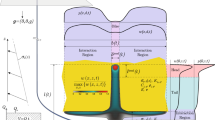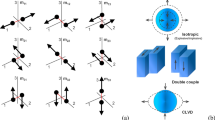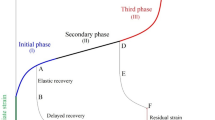Abstract
An Enhanced Geothermal System (EGS) can be thought of as an underground heat exchanger designed to extract geothermal energy. The performance of these systems can be improved by increasing permeability with hydraulic fracturing, following the same technique used for hydrocarbon reservoirs. To understand hydraulic fracturing, whether it is implemented in an EGS or in a hydrocarbon reservoir, it is important to know the fracture parameters of the rock at stake, e.g., the fracture energy. We report here the use of a method based on an energy balance during hydraulic fracture tests. Specimens were prepared and they have been mechanically and hydromechanically characterized at 20 ºC and 100 ºC, a temperature representative of actual reservoir conditions. The fracture energy is obtained from a balance of kinetic, potential and pressure energies involved in the hydraulic fracture tests. The method provides fracture energies that are consistent with the literature data on similar materials. It is also found that the fracture energy increases upon heating.








Similar content being viewed by others
Abbreviations
- \(G_{{\text{f}}}\) :
-
Fracture energy
- E :
-
Modulus of elasticity
- ϕ :
-
Open porosity
- ʋ :
-
Poisson ratio
- σ t :
-
Tensile strength
- к :
-
Coefficient of permeability
- σ c :
-
Maximum compressive strength
- P atm :
-
Atmospheric pressure
- E μ :
-
The Energy dissipated by viscosity
- \(C\) :
-
Constant
- \(D_{{\text{O}}}\) :
-
Diameter outside
- \(D_{{\text{I}}}\) :
-
Diameter inside
- AE:
-
Acoustic emission
References
ASTM C 642–13 (2013),Standard test method for density, absorption, and voids in hardened concrete. ASTM International, West Conshohocken, PA, www.astm.org. Accessed Nov 2018
Bazant ZP, Kazemi MT (1990) Determination of fracture energy, process zone length and brittleness number from size effect, with application to rock and concrete. Int J Fract 44:111–131
Bazant ZP, Planas J (1998) Fracture and size effect in concrete and other quasi-brittle materials. CRC Press, p 640
Bazant ZP, Prat PC (1988) Effect of temperature and humidity on fracture energy of concrete. ACI Mater J 85:262–271
Chen W, Maurel O, Reess T, Sylvestre De Ferron A, La Borderie C, Pijaudier-Cabot G, Rey-Betbeder F, Jacques A (2012) Experimental study on an alternative oil stimulation technique for tight gas reservoirs based on dynamic shock waves generated by pulsed arc electrohydraulic discharges. J Pet Eng 88–89:67–74
Choinska M, Khelidj A, Chatzigeorgiou G, Pijaudier-Cabot G (2007) Effects and interactions of temperature and stress-level related damage on permeability of concrete. Cem Concr Res 37:79–88
Friedman M, Handin J, Alani G (1972) Fracture-surface energy of rocks. Int j Rock Mech Min Sci 9:757–766
Gell EM, Walley SM, Braithwaite CH (2019) Review of the Validity of the Use of Artificial Specimens for Characterizing the Mechanical Properties of Rocks. Rock Mech Rock Eng 52:2949–2961
Goncalves da Silva B, Einstein H (2018) Physical processes involved in the laboratory hydraulic fracturing of granite: visual observations and interpretations. Engrg Fract Mech 191:125–142
Haidar K, Pijaudier-Cabot G, Dubé JF, Loukili A (2005) Correlation between the internal length, the fracture process zone and size effect in model materials. Mater Struct 38:201–210
Halamickova P, Detwiler RJ, Bentz DP, Garboczi EJ (1995) Water permeability and chloride ion diffusion in Portland cement mortars: relationship to sand content and critical pore diameter. Cem Concr Res 25(4):790–802
Kuruppu MD, Obara Y, Ayatollahi MR, Chong KP, Funatsu T (2013) The IRSM suggested methods for rock characterization, testing and monitoring. Springer, pp 107–114
Li W, Jin Z, Cusatis G (2019) size effect analysis for the characterization of Marcellus shale Quasi-brittle fracture properties. Rock Mech Rock Eng 52:1–18
Marinescu ID, Pruteanu M (2015) Deformation and fracture of ceramic materials. In: Doi T, Uhlmann E, Marinescu ID (eds) Handbook of ceramics grinding and polishing, 2nd edn. Elsevier Pubs, pp 50–66 (Chapter 2)
Maurel O, Rees T, Matallah M, De Ferron A, Chen W, Laborderie C, Pijaudier-Cabot G, Jacques A, Rey-Bethbeder F (2010) Electrohydraulic shock wave generation as a mean to increase intrinsic permeability of mortar. Cem Concr Res 40:1631–1638
Mei C, Fang Q, Luo H, Yin J, Fu X (2017) A synthetic material to simulate soft rocks and its applications for model studies of socketed piles. Adv Mater Sci Eng 2017, 1565438
Menou A, Mounajed G, Carre PBH (2006) Residual Fracture Energy of Cement Paste, Mortar and Concrete Subject to High Temperature. Theoret Appl Fract Mech 45:64–71
Ouchterlony F (1988) Suggested methods for determining the fracture toughness of rock. ISRM Commission on Testing Methods. Int. j. Rock Mech Min Sci Geomech Abstr 25:71–96 (co-ordinator)
Pijaudier-Cabot G, Halimohammadi A, Nouailletas O, La Borderie C, Padin Peben A, Mathieu JP (2021) Experimental determination of the fracture energy of rocks form size effect tests on semi-circular notched specimens, submitted to Rock Mechanics and Rock Engineering
Reid RC, Prausnitz JM, Poling BE (1987) The properties of gases and liquids. McGraw-Hill, New York, p 136
Rilem (1990) Size effect method for determining fracture energy and process zone size of concrete. Mater and Struct 23:461–465
Tester JW, Anderson B, Batchelor A, Blackwell D, DiPippo R, Drake E, Garnish J, Livesay B, Moore MC, Nichols K (2006) The future of geothermal energy: Impact of enhanced geothermal systems (EGS) on the United States in the 21st century. Massachusetts Institute of Technology
Wanniarachchi WAM, Ranjith PG, Perera MSA, Rathnaweera TD, Zhang DC, Zhang C (2018) Investigation of effects of fracturing fluid on hydraulic fracturing and fracture permeability of reservoir rocks: an experimental study using water and foam fracturing. Eng Fract Mech 194:117–135
Wei MD, Dai F, Xu NW, Zhao T, Liu Y (2017) An experimental and theoretical assessment of semi-circular bend specimens with chevron and straight-through notches for mode I fracture toughness testing of rocks. Int j Rock Mech Min Sci 99:28–38
Yew CH, Weng X (2014) Mechanics of hydraulic fracturing. Gulf Professional Publishing, pp 1–2
Zhou J, Chen M, Jin Y, Zhang G (2008) Analysis of fracture propagation behavior and fracture geometry using tri-axial fracturing system in naturally fractured reservoirs. Int j Rock Mech Min Sci 45:1143–1152
Acknowledgements
Partial financial supports from the hub “Newpores” under the Investissement d’Avenir French programme (ANR-16-IDEX-0002), from CONACYT (Mexican National Council of Science and Technology), Campus France México and from ANDERA (Association pour le Développement des Energies Renouvelables et Alternatives) are acknowledged. A very special thanks to the staff of CeMIE-Geo for their help, especially to Dr. José Manuel Romo Jones, Lic. Claudia Cardenas, Lic. Belinda Sandoval, M.C. Margarita Martinez, Dr. Rene Guzmán and M.C. Omar Pérez Valdovinos.
Author information
Authors and Affiliations
Contributions
Conceptualization: AVV, MHR; methodology: ORV, AVV, CLB, GP-C; formal analysis and investigation: ORV, AVV; writing—original draft preparation: ORV; writing—review and editing: AVV, CLB, GP-C, MHR; funding acquisition: AVV, GPC, MHR, supervision: AVV, CLB, GP-C, MHR.
Corresponding author
Additional information
Publisher's Note
Springer Nature remains neutral with regard to jurisdictional claims in published maps and institutional affiliations.
Rights and permissions
About this article
Cite this article
Rodríguez Villarreal, O., Varela Valdez, A., La Borderie, C. et al. Estimation of Fracture Energy from Hydraulic Fracture Tests on Mortar and Rocks at Geothermal Reservoir Temperatures. Rock Mech Rock Eng 54, 4111–4119 (2021). https://doi.org/10.1007/s00603-021-02496-x
Received:
Accepted:
Published:
Issue Date:
DOI: https://doi.org/10.1007/s00603-021-02496-x




